How one British Columbia First Nation is building its vision of the guardian conservation model being adopted by Indigenous Peoples across Canada.

ON A MAY MORNING in British Columbia’s Bella Coola Valley, Clyde Tallio, a long limbed 31-year-old Nuxalk intellectual, and I walk a dirt road that gives way to a forest path up a bank from Thorsen Creek, swollen with spring melt. As we slip beneath the forest canopy, we move between worlds: from rural Western Canada to sacred Nuxalk territory. These are the lands of Tallio’s people, who are emerging as protagonists in an Indigenous epic unfolding on this unconquered expanse of Pacific coast.
Tallio calls out in his Nuxalk tongue, an endangered language with fewer than 10 fluent speakers that he spent years studying instead of attending university. He announces our presence to the animals, ancestors and spirits, clearing our path and asking for protection. We turn our bodies in a clockwise circle, the same way dancers spin before entering the dance floors of the big houses that are the spiritual hearts of Indigenous communities along the coast. Thorsen Creek, or Squmalh in Nuxalk, a tributary of the lower Bella Coola River cut into the valley by retreating Pleistocene glaciers, connects us to Nuxalk creation.
Ahead, watching us from the rainforest’s soggy verdant floor, are dozens of ancient petroglyphs etched into rocks lining the stepped trail. The glyphs, carved in stone thousands of years ago (estimates range from 5,000 to 10,000 years), date roughly to the Mid-Holocene, a period of significant ecological change that made resources like western red cedar — an essential material for building structures, wares and artworks — more abundant and accessible to coastal peoples. Tallio dates the glyphs to “the time of the fixing of the Earth.” In poetic, if not archeological terms, he might be right.
Denne historien er fra November/December 2018-utgaven av Canadian Geographic.
Start din 7-dagers gratis prøveperiode på Magzter GOLD for å få tilgang til tusenvis av utvalgte premiumhistorier og 9000+ magasiner og aviser.
Allerede abonnent ? Logg på
Denne historien er fra November/December 2018-utgaven av Canadian Geographic.
Start din 7-dagers gratis prøveperiode på Magzter GOLD for å få tilgang til tusenvis av utvalgte premiumhistorier og 9000+ magasiner og aviser.
Allerede abonnent? Logg på
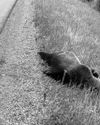
ANIMAL XING
THIS PAST SUMMER AN AMBITIOUS WILDLIFE UNDER/OVERPASS SYSTEM BROKE GROUND IN B.C. ON A DEADLY STRETCH OF HIGHWAY JUST WEST OF THE ALBERTA BORDER. HERE’S HOW IT HAPPENED.
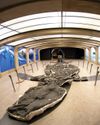
Unearthing a giant
Almost 30 years ago, paleontologist Elizabeth “Betsy” Nicholls made a discovery of colossal proportions
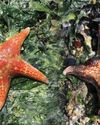
WE DID THIS
AS THE IMPACTS OF GLOBAL WARMING BECOME INCREASINGLY EVIDENT, THE CONNECTIONS TO BIODIVERSITY LOSS ARE HARD TO IGNORE. CAN THIS FALL’S TWO KEY INTERNATIONAL CONFERENCES POINT US TO A NATURE-POSITIVE FUTURE?
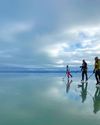
The COOLEST COUNTRY
“The coolest country” celebrates the wonders of winter with an all-Canadian theme. The 20-page travel planner includes a bucket list from travel writer Robin Esrock, steamy spa ideas, ice fishing destinations, festival fun, northern itineraries and more!
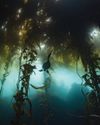
KEEPER of the SEA
FROM BEING LABELLED DEVIL’S APRON BY FRUSTRATED FISHERMEN TO BEING LAUDED AS A SUSTAINABLE FOOD SOLUTION: HOW KELP’S POTENTIAL IS BEING REALIZED, JUST AS SCIENTISTS LEARN IT’S DECLINING
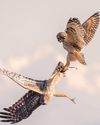
WILD THINGS
WILD CANADIAN GEOGRAPHIC PRESENTS THE WINNERS OF ITS ANNUAL CANADIAN WILDLIFE PHOTOGRAPHY OF THE YEAR COMPETITION
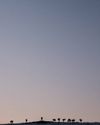
AN EMPTY LANDSCAPE
AFTER MORE THAN A MILLION YEARS ON EARTH, CARIBOU ARE UNDER THREAT OF GLOBAL EXTINCTION. THE PRECIPITOUS DECLINE OF THE ONCE MIGHTY HERDS IS A TRAGEDY THAT IS HARD TO WATCH — AND EVEN HARDER TO REVERSE.
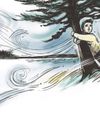
NORTHERN EXPOSURE
BON INTO A CARIBOU-HUNTING CREE FAMILY IN NORTHERN MANITOBA, ACCLAIMED PLAYWRIGHT AND NOVELIST. TOMSON HIGHWAYS PAYS TRIBUTE TO THE MAGICAL WORLD OF HIS CHILDHOOD IN PERMANENT ASTONISHMENT
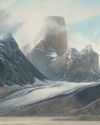
INTO THE ARCTIC
CANADIAN PAINTER AND FILMMAKER CORY TRÉPANIER EXPLORES THE SUBLIME AND RAPIDLY CHANGING CANADIAN ARCTIC

Under the ice
Until the last decade, we knew little about what lay beneath the Arctic ice. Now scientists and explorers are shedding light on this vanishing world.